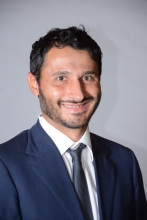CEE Seminar (ZOOM): Challenges and Opportunities in Nonstationary Frequency Analysis of Extreme Precipitation

Assistant Professor
School of Sustainable Engineering and the Built Environment
Arizona State University
Abstract: Infrastructure systems provide critical services supporting the economic development of all nations. A key task needed to operate and design infrastructure is to assess their ability to withstand extreme precipitation (EP). This is done through frequency analysis of precipitation records that, in most countries, is performed under the assumption of stationarity. Theoretical arguments, observed records and climate simulations indicate that this assumption may not be valid under a future warmer climate. In this talk, the basics of EP frequency analysis will be presented, and some of the challenges associated with the incorporation of nonstationarity will be discussed. A methodology that addresses these challenges using mixed statistical distributions of EP and changes in weather type (WT) occurrence will be introduced. The utility of mixed distributions will be demonstrated under stationarity in central Arizona. The extension to nonstationary conditions will then be showed by focusing on the U.S. Midwest, where it has been recently proved that the occurrence of a dominant WT related to heavy precipitation has been increasing since 1949. The proposed nonstationary framework will be first applied with atmospheric reanalysis, showing that its statistical uncertainty is comparable to that of a stationary approach used in current engineering design. The methodology will then be applied using climate simulations of a set of general circulation models from CMIP6 to quantify projected changes in EP frequency in the region, along with the associated uncertainty.
Bio: Giuseppe Mascaro holds bachelor's and master's degrees in civil engineering and a doctorate in hydrology from the University of Cagliari, Italy. He worked in the industry for two years and then as a research scientist and engineer at New Mexico Tech, University of Cagliari and Arizona State University (ASU). He is currently an assistant professor in the School of Sustainable Engineering and the Built Environment at ASU. His research interests include stochastic hydrology, watershed modeling, impacts of climate change on hydrologic processes, food-water-energy nexus and hydroinformatics.
